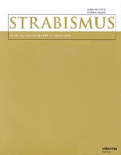
Strabismus
Scope & Guideline
Pioneering Knowledge in Ophthalmology's Complexities
Introduction
Aims and Scopes
- Clinical and Surgical Interventions:
Research that evaluates various surgical techniques for strabismus correction, including comparisons of one versus two muscle surgeries, muscle recessions, and novel surgical approaches. - Assessment and Measurement Techniques:
Studies exploring new methods for measuring ocular alignment, stereopsis, and visual function, including the use of advanced imaging technologies like optical coherence tomography. - Epidemiological Studies:
Investigations into the prevalence, risk factors, and outcomes associated with strabismus and amblyopia, particularly in diverse populations and clinical settings. - Innovative Therapies and Rehabilitation:
Research focusing on non-surgical treatments for amblyopia and strabismus, including the efficacy of occlusion therapy, visual training, and the impact of digital devices on ocular health. - Pathophysiology and Mechanisms:
Exploration of the underlying mechanisms of strabismus and associated conditions, including studies on ocular motor nerve palsies and congenital anomalies.
Trending and Emerging
- Impact of Digital Devices on Ocular Health:
A growing interest in understanding how smartphone and tablet usage affects ocular function and contributes to conditions like strabismus and amblyopia, reflecting societal changes in technology. - Multimodal Imaging Techniques:
Increased utilization of advanced imaging modalities, such as optical coherence tomography and multimodal imaging approaches, to enhance the understanding of strabismus and its surgical outcomes. - Interdisciplinary Approaches to Treatment:
Emerging research that incorporates psychological and behavioral assessments into the treatment of strabismus and amblyopia, recognizing the importance of holistic patient care. - Long-term Outcomes and Quality of Life Studies:
A trend towards investigating the long-term visual and neurodevelopmental outcomes of surgical interventions and their implications for patient quality of life. - Innovative Non-Surgical Therapies:
An increase in studies exploring new non-surgical interventions for strabismus and amblyopia, including the use of smartphone applications and other digital tools to enhance treatment compliance.
Declining or Waning
- Historical and Theoretical Perspectives:
Research that delves into historical accounts or theoretical discussions of strabismus phenomena has seen a decline, likely as the field shifts towards more empirical and clinical studies. - Basic Anatomy Studies:
While anatomical studies are foundational, there appears to be a reduction in purely descriptive anatomical research as the focus shifts towards functional and surgical implications. - Single Case Reports:
The frequency of publishing singular case reports has decreased, possibly due to a growing preference for larger cohort studies that provide more generalizable findings. - Traditional Approaches to Amblyopia Treatment:
There seems to be less emphasis on conventional treatment methods for amblyopia, such as patching, as innovative therapies and technology-driven approaches gain attention.
Similar Journals
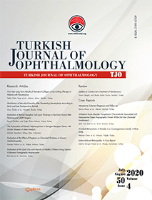
Turk Oftalmoloji Dergisi-Turkish Journal of Ophthalmology
Championing Quality Research in Eye CareTurk Oftalmoloji Dergisi - Turkish Journal of Ophthalmology is a premier peer-reviewed publication dedicated to the field of ophthalmology, published by GALENOS PUBL HOUSE. Since its inception in 1997, this Open Access journal has championed the dissemination of high-quality research, fostering an inclusive environment for sharing knowledge and advancements in eye health. With an ISSN of 1300-0659 and an E-ISSN of 2147-2661, the journal serves as a vital resource for researchers, clinicians, and students interested in the latest findings and innovations in ophthalmic sciences. Although its coverage in Scopus has been discontinued since 2017, the journal has garnered a significant rank of 80 out of 114 in the field of Medicine – Ophthalmology, highlighting its relevance and impact within the discipline. Operating out of Istanbul, Turkey, the Turkish Journal of Ophthalmology continues to be a crucial platform for ophthalmologists and researchers to publish their work and advance the understanding of ocular health.

GRAEFES ARCHIVE FOR CLINICAL AND EXPERIMENTAL OPHTHALMOLOGY
Unveiling the Science Behind SightGRAEFES ARCHIVE FOR CLINICAL AND EXPERIMENTAL OPHTHALMOLOGY, published by Springer, has established itself as a premier journal in the field of ophthalmology since its inception in 1870. With an ISSN of 0721-832X and an E-ISSN of 1435-702X, this esteemed journal enjoys a notable impact in the research community, ranking Q1 in Ophthalmology and Q1 in Sensory Systems, as per the latest 2023 journal category quartiles. GRAEFES Archive is dedicated to advancing our understanding of ocular health through both clinical and experimental studies, making it an essential resource for researchers, practitioners, and students alike. Its comprehensive scope covers various aspects of ophthalmic science, reflecting its long-standing commitment to quality and excellence. Although it currently operates on a subscription basis, the journal's significant Scopus rankings—24th out of 137 in Ophthalmology—underscore its relevance and influence within the scientific community. Situated in Germany, with its address in the United States, this international journal continues to shape the discourse on vision science and therapeutic innovation.
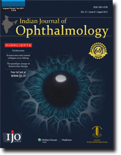
INDIAN JOURNAL OF OPHTHALMOLOGY
Transforming Eye Health: Discover, Share, InnovateThe Indian Journal of Ophthalmology is a prestigious, peer-reviewed publication dedicated to advancing the field of ophthalmology. Published by Wolters Kluwer Medknow Publications, this journal plays a vital role in disseminating high-quality research and clinical insights since its inception in 1946. With an impact factor placing it in the Q2 category in Ophthalmology for 2023, it ranks #42 out of 137 in Scopus, reflecting its influence and reliability in the medical community. As an Open Access journal since 2005, it ensures that impactful research is accessible to a global audience, fostering innovation and knowledge sharing among researchers, healthcare professionals, and students alike. The journal's commitment to publishing cutting-edge studies, comprehensive reviews, and clinical guidelines makes it an essential resource for those navigating the rapidly evolving landscape of eye care and ophthalmology.

Eye and Brain
Pioneering research at the intersection of ophthalmology and neuroscience.Eye and Brain is a distinguished open-access journal published by DOVE MEDICAL PRESS LTD, specializing in the interdisciplinary fields of ophthalmology and neuroscience. Since its inception in 2009, the journal has been committed to disseminating high-quality research that enhances understanding of visual perception and neural processes related to vision. With an impressive Scopus ranking in the 92nd percentile for Ophthalmology and the 89th percentile for Neuroscience Sensory Systems, Eye and Brain stands at the forefront of scientific inquiry, providing essential insights into cellular and molecular mechanisms underlying vision and sensory integration. The journal is dedicated to publishing articles that address critical challenges and advancements in these fields, making it a vital resource for researchers, professionals, and students alike. Situated in New Zealand, Eye and Brain not only represents a global collaboration in the eye and brain sciences but also offers a platform for groundbreaking research in the evolving landscape of sensory systems. Submissions are welcomed from across the globe, encouraging a broad spectrum of viewpoints and methodologies.
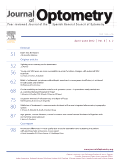
Journal of Optometry
Empowering the optometry community through shared knowledge.The Journal of Optometry, published by Elsevier, is a leading open access journal dedicated to advancing the field of optometry and vision science. With an ISSN of 1888-4296 and an E-ISSN of 1989-1342, this journal serves as a pivotal platform for researchers, practitioners, and academics alike to disseminate and engage with high-quality original research and review articles. As of 2023, the journal holds an impressive Q2 ranking in the Optometry category, demonstrating its influence and relevance, particularly as it ranks #2 out of 12 in the Health Professions - Optometry category on Scopus with an 87th percentile. Since becoming open access in 2008, the Journal of Optometry has prioritized accessibility and the exchange of ideas, enriching the scholarly community and enhancing practical application in clinical settings. The journal welcomes submissions that push the boundaries of ocular research, clinical practices, and the education of optometry professionals, making it an essential resource for anyone invested in the future of eye health.
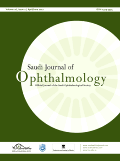
Saudi Journal of Ophthalmology
Pioneering Research: Illuminating the Path to Better Eye HealthSaudi Journal of Ophthalmology, published by Wolters Kluwer Medknow Publications, stands as a crucial platform for the dissemination of innovative research and clinical practices in the field of ophthalmology. Since its inception in 2009, this journal has effectively contributed to the growing body of knowledge with a focus on addressing the diverse visual health challenges faced globally. With an ISSN of 1319-4534 and a E-ISSN of 2542-6680, the journal is indexed in Scopus, where it ranks in the Q3 category of ophthalmology, reflecting its commitment to quality research despite the competitive landscape. Situated in India, it provides a unique regional perspective while facilitating global discourse among researchers, practitioners, and students in ophthalmological sciences. Although it currently does not operate as an open-access journal, the Saudi Journal of Ophthalmology is essential for those aiming to expand their understanding of advancements in eye care, making it a valuable resource for professionals dedicated to enhancing patient outcomes through informed research and clinical practice.

Journal of Ophthalmology
Bridging Research and Practice in Eye HealthThe Journal of Ophthalmology, published by HINDAWI LTD, is an esteemed open-access journal that has been disseminating significant research in the field of ophthalmology since 2009. With an ISSN of 2090-004X and an E-ISSN of 2090-0058, this journal facilitates global access to cutting-edge studies, making it an essential resource for researchers, clinicians, and students alike. Ranked in the Q2 category of ophthalmology for 2023, the journal holds a commendable position with a Scopus rank of #37 out of 137 in its field, placing it in the 73rd percentile. The journal encompasses a variety of topics such as clinical advancements, surgical techniques, and innovative technologies in eye care, aiming to advance scientific knowledge and clinical practice in ophthalmology. By providing a platform for both novel research and comprehensive reviews, the Journal of Ophthalmology is instrumental in fostering collaboration and scholarly communication within the global eye health community, and its commitment to open access ensures that impactful research reaches a wide audience without barriers.
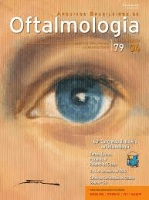
ARQUIVOS BRASILEIROS DE OFTALMOLOGIA
Exploring the frontiers of vision science and surgical excellence.ARQUIVOS BRASILEIROS DE OFTALMOLOGIA is a prominent peer-reviewed journal dedicated to the field of ophthalmology, published by CONSEL BRASIL OFTALMOLOGIA since its inception in 1945. With its commitment to disseminating high-quality research, the journal has transitioned to an Open Access model since 2001, ensuring that vital findings in ophthalmology are freely available to researchers, clinicians, and students alike. Located in São Paulo, Brazil, this esteemed publication occupies a significant position in the medical field, currently holding a Q3 ranking in both the miscellaneous medicine and ophthalmology categories. Although it maintains a legacy of fluctuating impact, recognized for its contribution to the academic community, ARQUIVOS BRASILEIROS DE OFTALMOLOGIA continues to attract a diverse international readership, making it a valuable resource for advancements in eye health, surgical techniques, and ocular research.

JAPANESE JOURNAL OF OPHTHALMOLOGY
Illuminating the Future of Ophthalmic ResearchJapanese Journal of Ophthalmology, published by Springer Japan KK, is a premier peer-reviewed journal dedicated to advancing the field of ophthalmology. With an impressive impact reflected in its Q1 categories—ranking among the top journals in both Medicine (miscellaneous) and Ophthalmology, as per the 2023 metrics—it serves as an essential platform for researchers and professionals to disseminate their findings. Covering a broad spectrum of topics from clinical studies to innovative technologies in eye care, this journal not only supports the ongoing education of its readership but also fosters significant developments within the field. The journal, which has been in circulation since 1973 and is set to continue through 2024, offers access to vital research, thereby enabling practitioners and scholars to keep abreast of the latest advancements. Its distinguished Scopus ranking of #30 out of 137 in Medicine - Ophthalmology, placing it in the 78th percentile, further underscores its influence and importance in contributing to the global understanding of eye health.
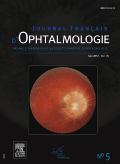
JOURNAL FRANCAIS D OPHTALMOLOGIE
Connecting professionals to the latest in vision care advancements.JOURNAL FRANCAIS D OPHTALMOLOGIE, published by MASSON EDITEUR, is a prominent peer-reviewed journal that serves as a vital resource in the field of ophthalmology. Launched in 1978, this esteemed publication continues to make significant contributions to the advancement of ocular health and vision science, with its scope encompassing clinical practices, innovative research, and the latest technological advancements in ophthalmic care. Based in France, the journal is recognized in the 2023 category quartiles with a Q3 ranking in ophthalmology, reflecting its dedication to quality scholarship within a competitive landscape, as evidenced by its positioning in the 30th percentile of the Scopus rankings. While it operates without Open Access, the journal remains crucial for professionals, researchers, and students alike, providing a platform for sharing knowledge and fostering collaborations in the global ophthalmological community.